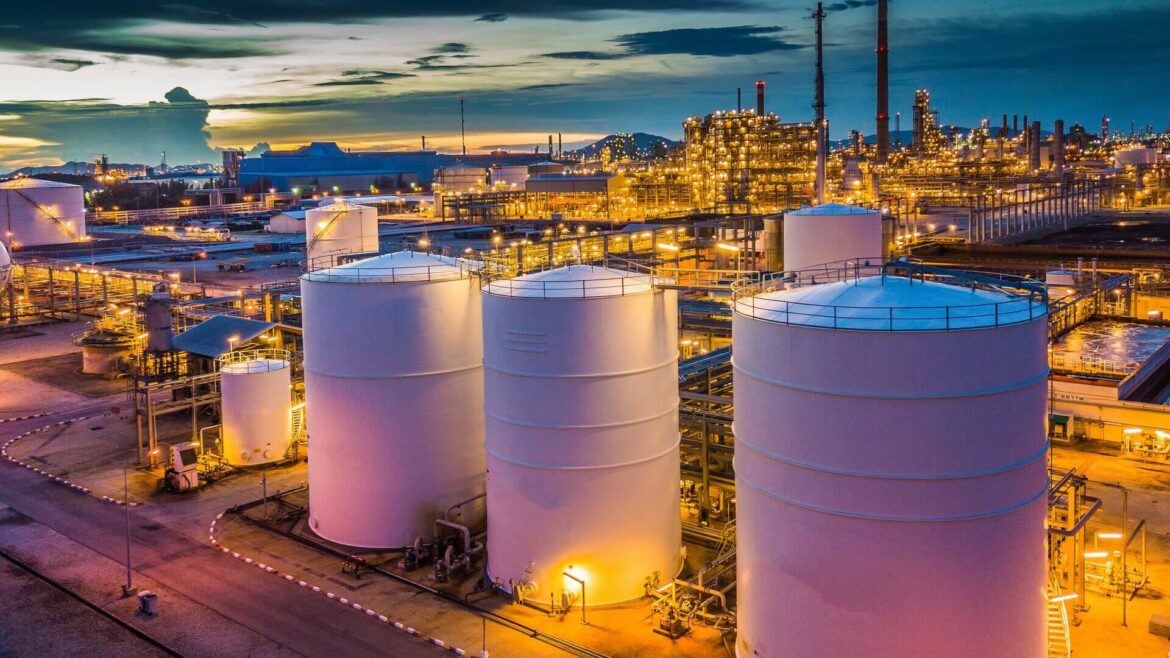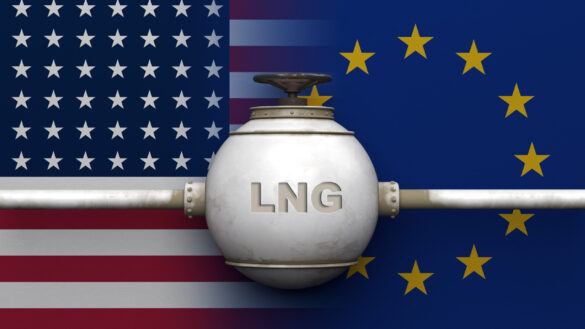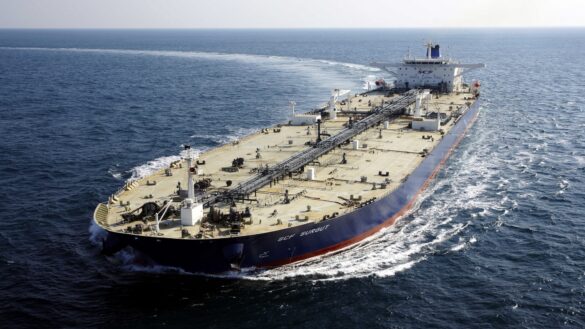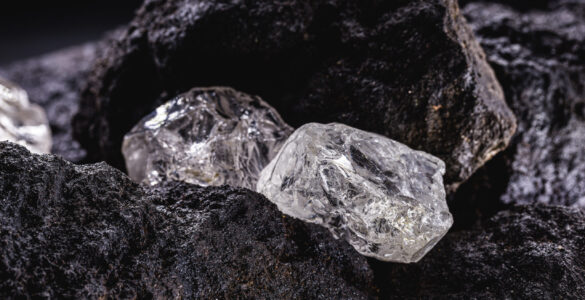Oil, natural gas and coal continued to dominate global primary energy consumption in 2022 despite focused efforts by western governments to subsidise a largely debt-funded transition to renewables and electric vehicles (EVs).
How the Oil and Gas Industry Works
Investors looking to enter the oil and gas industry can quickly be overwhelmed by the complex jargon and unique metrics used throughout the sector. This introduction is designed to help anyone understand the fundamentals of companies involved in the oil and gas sector by explaining key concepts and the standards of measurement.
KEY TAKEAWAYS
- The oil and gas industry is broken down into three segments: upstream, midstream, and downstream.
- Upstream, or exploration and production (E&P) companies, find reservoirs and drill oil and gas wells.
- Midstream companies are responsible for transportation from the wells to refineries.
- Downstream companies are responsible for refining and the sale of the finished products.
- Drilling companies contract their services to E&P companies to extract oil and gas.
- Well-servicing companies conduct related construction and maintenance activities on well sites.
What Is Oil and Gas Production?
Oil and gas production is a multi-stage entire process of discovering a resource, transporting it to a refinery, and turning it into a finished product ready for sale. Or, in industry terminology, upstream, midstream, and downstream segments.
About Hydrocarbons
Hydrocarbons make up crude oil and natural gas, which are naturally occurring substances found in rock in the earth’s crust. These organic raw materials are created by the compression of the remains of plants and animals in sedimentary rocks such as sandstone, limestone, and shale.

Hydrocarbons are brought to the surface by drilling through the cap rock and into the reservoir. Once the drill bit reaches the reservoir, a productive oil or gas well can be constructed and the hydrocarbons can be pumped to the surface. When the drilling activity does not find commercially viable quantities of hydrocarbons, the well is classified as a dry hole, which is typically plugged and abandoned.
Hydrocarbons trapped in rock formations such as oil shale can be extracted by injecting high-pressure fluid into the ground and fracturing the rock, a process known as “fracking”.
Upstream, Midstream, Downstream
The oil and gas industry is broken down into three main segments: upstream, midstream, and downstream.
Upstream
Upstream businesses consist of companies involved in the exploration and production of oil and gas. These are the firms that search the world for reservoirs of the raw materials and then drill to extract that material. These companies are often known as “E&P” for “exploration and production.”
The upstream segment is characterized by high risks, high investment capital, extended duration as it takes time to locate and drill, as well as being technologically intensive. Virtually all cash flow and income statement line items of E&P companies are directly related to oil and gas production.
E&P companies do not usually own their own drilling equipment or employ a drilling rig staff. Instead, they hire contract drilling companies to drill wells for them and the contract drilling companies generally charge for their services based on the amount of time they work for an E&P company.
Midstream
Midstream businesses are those that are focused on transportation. They are the ones responsible for moving the extracted raw materials to refineries to process the oil and gas. Midstream companies are characterized by shipping, trucking, pipelines, and storing raw materials.
Downstream
Downstream businesses are the refineries and gas stations. Refineries are the companies responsible for removing impurities and converting the oil and gas to products for the general public, such as gasoline, jet fuel, heating oil, and asphalt. Gas stations are where consumers fuel up at the pump.
Understanding Oil Production Numbers
E&P companies measure oil production in barrels. One barrel, usually abbreviated as bbl, is equal to 42 U.S. gallons. Companies often describe production in terms of bbl per day or bbl per quarter.
A common methodology in the oil patch is to use a prefix of “M” to indicate 1,000 and a prefix of “MM” to indicate 1 million. Therefore, 1,000 barrels are commonly denoted as Mbbl, and 1 million barrels are denoted as MMbbl. For example, when an E&P company reports production of seven Mbbl per day, it means 7,000 barrels of oil per day.
As is the case for drilling, many public companies are involved in well service activity. The revenue of service companies is tied to the activity level in the oil and gas industry. Rig count and utilization rates are indicators of the amount of activity happening in the United States at any given time.
Understanding Gas Production Numbers
Natural Gas production is described in terms of cubic feet. Similar to the convention for oil, the term Mmcf means 1 million cubic feet of gas. Bcf means 1 billion cubic feet and Tcf represents 1 trillion cubic feet.
Note that natural gas futures trade on the CME Group futures exchange, but are not measured in cubic feet. Instead, the futures contract is based on 1 million British thermal units, or MMBtu, which is roughly equivalent to 970 cubic feet of gas.
E&P companies often describe their production in units of barrels of oil equivalent (BOE). To calculate BOE, companies usually convert gas production into oil equivalent production. In this calculation, one BOE has the energy equivalent of 6,040 cubic feet of gas or roughly one bbl to six Mcf. Oil quantity can be converted into gas quantity in a similar fashion and gas producers often refer to production in terms of gas equivalency using the term Mcfe.
E&P companies report their oil and natural gas reserves—the quantity of oil and gas they own that is still in the ground—in the same bbl and mcf terms. Reserves are often used to value E&P companies and make predictions for their revenue and earnings. Public oil and gas companies are required to disclose proven oil and gas reserve quantities as supplementary information, but not as part of their financial statement.
Of course, new reserves are an essential source of future revenue, so E&P companies spend a lot of time and money exploring new untapped reservoirs. If an E&P company stops exploring, it will have only a finite amount of reserves and a depleting quantity of oil and gas. Revenue will inevitably decline over time. In short, E&P companies can only maintain or grow revenue by acquiring or finding new reserves.
What Is an Integrated Oil Company?
An integrated oil company is involved in two or more of the stages of oil production (e.g., both upstream and downstream). Many of the world’s largest and most influential oil companies today are integrated oil and gas companies, which have separate divisions for each stage. Being an integrated company allows for complete control and improved efficiency. It also provides for various streams of revenue and diversification. However, due to the very high capital costs involved with oil exploration and refining, barriers to entry are very high for new competitors.
Which Countries Produce the Most Oil and Gas?
What Are the 3 Ps of Oil Reserves?
Reserves refer to crude oil or natural gas deposits that remain underground and have not yet been extracted. The three “P”s of reserves refer to “proven”, “probable” and “possible.” These correspond with the likelihood of successfully drilling in those deposits. The oil and gas industry gives proven reserves a 90% certainty of being produced (also known as P90). The industry gives probable reserves a 50% certainty (P50), and possible reserves just a 10% certainty (P10) of actually being produced.





